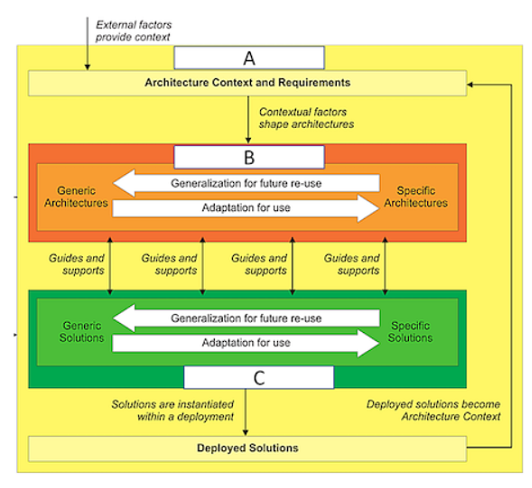
- Email support@dumps4free.com

Which of the following best describes the purpose of the Architecture Roadmap?
A. It provides for effective communication of the end architecture project to the stakeholders
B. It is sent from the sponsor and triggers the start of an architecture development cycle
C. It forms the basis of a contractual agreement between the sponsor and the architecture organization
D. It lists work packages on a timeline showing progress towards the Target Architecture
Explanation: The purpose of the Architecture Roadmap is to provide a high-level view of how the Baseline Architecture will transition to the Target Architecture over time. It lists work packages on a timeline showing progress towards the Target Architecture, as well as dependencies, risks, and benefits. The Architecture Roadmap forms part of the Implementation and Migration Plan and guides the execution of the architecture projects.
Consider the following statements:
A. Enterprises
B. Business Units
C. Organizations
D. Architectures Scopes
Explanation: Enterprises are examples of the scope of an architecture according to the TOGAF Standard. An enterprise is defined as any collection of organizations that has a common set of goals and/or a single bottom line. Enterprises can be whole corporations or divisions of a corporation, government agencies or single government departments, partnerships and alliances of businesses working together, etc.
Consider the illustration.
What are the items labelled A, B and C?
A. A-Enterprise Continuum, B-Architecture Continuum, C-Solutions Continuum
B. A-Enterprise Architecture, B-Architecture Building Blocks, C-Solutions Building Blocks
C. A-Architecture Vision, B-Business Architecture, C-Information Systems Architecture
D. A-Enterprise Strategic Architecture, B-Segment Architecture, C-Solutions Architecture
Explanation: The illustration shows the relationship between the Enterprise Continuum, the Architecture Continuum, and the Solutions Continuum, which are key concepts in the TOGAF framework. The Enterprise Continuum is a view of the Architecture Repository that shows how generic foundation architectures can be leveraged and specialized to support the requirements of an individual organization. The Architecture Continuum specifies a structured classification for architectural artifacts, such as models, patterns, and descriptions, that can be reused and adapted across different domains and levels of abstraction. The Solutions Continuum identifies implemented solutions that support various stages of business and IT capability evolution, such as common systems, industry solutions, and organization-specific solutions. The illustration also shows how the architecture context and requirements are influenced by external factors, such as business drivers, stakeholders, and standards, and how they shape the generic and specific architectures and solutions. The illustration also shows how the deployed solutions become part of the architecture context for future iterations of the architecture development cycle.
Complete the sentence A set of architecture principles that cover every situation perceived meets the recommended criteria of_______________
A. consistency
B. robustness
C. stability
D. completeness
Explanation: A set of architecture principles that cover every situation perceived meets the recommended criteria of completeness. Completeness is one of the six criteria that should be applied when developing or assessing architecture principles. Completeness means that there are no gaps or overlaps in the coverage of principles across all relevant aspects of the enterprise’s architecture.
Which of the following best summarizes the purpose of Enterprise Architecture?
A. Taking major improvement decisions
B. Guiding effective change
C. Controlling the bigger changes
D. Governing the Stakeholders.
Explanation: EA applies architecture principles and practices to analyze, design, plan, and implement enterprise analysis that supports digital transformation, IT growth, and the modernization of IT2. EA also helps organizations improve the efficiency, timeliness, and reliability of business information, as well as the alignment, agility, and adaptability of the architecture to the changing needs and requirements3. Therefore, the best summary of the purpose of EA is to guide effective change.
| Page 6 out of 19 Pages |
| Previous |